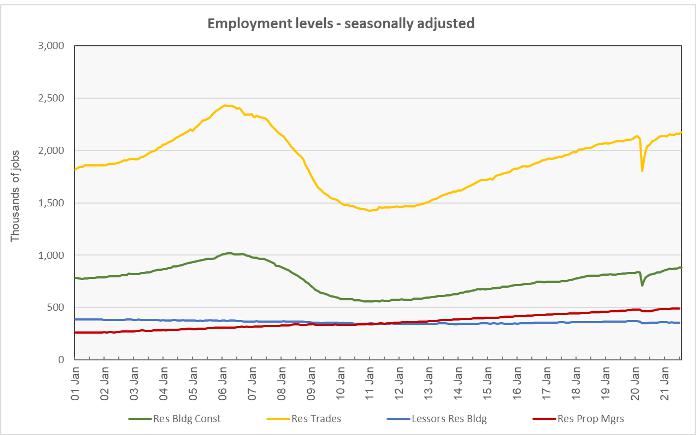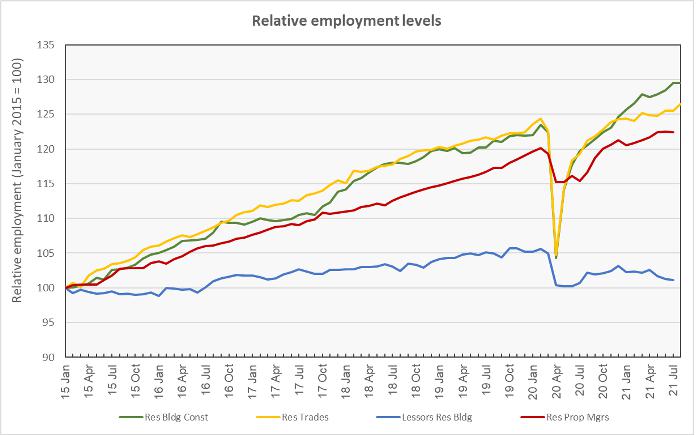The latest Employment Situation Report from the Bureau of Labor Statistics stated that residential construction jobs were up but apartment operations jobs were down.
Total employment grows slowly for the month
The BLS reported that the US unemployment rate fell to 5.2 percent in August, with total non-farm employment increasing by only 235,000 jobs. This was only about one third the level of job creation that economists were expecting. The number of people employed on non-farm payrolls is still 5.3 million lower than it was before the pandemic.
The labor force participation rate remained at 61.7 percent in August, 1.6 percent (4.2 million people) lower than its level before the pandemic. The employment to population ratio in August was 58.5 percent, down from the 61.1 percent level recorded before the pandemic.
The BLS reported more detailed employment information on four job categories of interest to the multifamily industry. These are employment as residential construction workers, as specialty trades within residential construction, as residential property managers and as lessors of residential buildings. As usual, some of the data is reported with a month delay, so the latest figures for the latter two categories are for the month of July.
The first chart shows the long-term history of the levels of employment in these four jobs categories.

Construction jobs higher
Employment in residential building construction in August, usually with general contractors, was reported to be up only 100 jobs (0.01 percent) from the revised employment level for July at 880,700 jobs. This is despite July’s preliminary figure being adjusted downward by 1,900 jobs. Employment in this category is now 4.9 percent higher than its level in February 2020, before the effects of the pandemic were felt.
Employment in residential building trades, i.e. plumbers, electricians, etc., in August was reported to be up 17,300 jobs (0.8 percent) from July’s revised figure at a level of 2,178,400 jobs. In addition, July’s preliminary employment figure was revised upward by 3,900 jobs. The employment level in this category is now 1.7 percent above its level in February 2020.
Total employment in these two categories of residential construction jobs combined was up 0.6 percent in August from the revised level of the month before and was 2.6 percent above its level in February 2020.
Apartment operations jobs reported lower
Employment for residential property managers in July was reported to be down by 300 jobs (0.1 percent) from its level for June to 490,800 jobs. However, the June jobs figure was revised upward by 500 jobs so the preliminary figure for July is up by 200 jobs from the preliminary figure for June reported last month. Employment for residential property managers was up from its February 2020 level by 1.9 percent.
Employment for lessors of residential buildings fell again in July, dropping by 600 jobs (0.2 percent) to a level of 353,500 jobs. This is despite June’s preliminary figure being revised downward by 600 jobs. Employment in this category is now down 4.2 percent from its pre-pandemic level.
Total employment in these two categories combined was down 0.1 percent for the month and is now 0.8 percent below its level in February 2020.
Zooming in
The final chart, below, presents the employment data in a slightly different format. It normalizes the employment levels in all four jobs categories to a reading of 100 for January 2015. This shows more clearly the relative magnitudes of the job losses during the shutdowns and strengths of the subsequent recoveries.

The numbers given in the Employment Situation report are seasonally adjusted and are subject to revision. It is common for small adjustments to be made in subsequent reports, particularly to the data for the most recent month. The current Employment Situation report can be found here.










